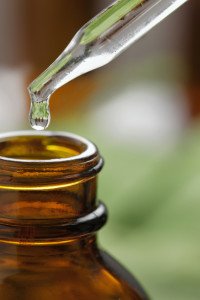Essential Oil Dilution is Imperative

Many people are new to aromatherapy and essential oils, and even people who have used them on themselves and on others for a long time, may not be aware that essential oils should be diluted. Moreover, if they know to dilute them, they don’t always know the proper dilutions for different types of applications (e.g., lotion, balm, bath oil) and for different people (babies, children, the elderly, and those with compromised systems). Here you’ll find a quick guide to essential oil dilutions.
Essential oils should be diluted. It doesn’t matter if they are pure, organic, natural, and derived from plants or nature. The process of distillation and extraction of essential oils creates a very concentrated plant-based substance. A common example is that there are 30 roses in just one drop of rose essential oil. That’s very potent. Essential oils should be high quality no matter what the application and no matter what the dilution.
There are just two essential oils that can be applied directly to the skin: lavender (Lavandula angustifolia) and tea tree (Melaleuca alternifolia).
As a general rule use these dilutions of essential oils for specific applications:
- 3% for products applied to specific limited areas of the body
- 1-2% for body oils and other applications that are applied to large portions of the body (e.g. massage oil, lotion, cream, body butter)
- 4-8 drops per bath: the essential oils should be added to the bath with a dispersant such as vegetable oil, whole – not fat-free or skim – milk, vegetable glycerin, or salt (those with sensitive skin should use fewer drops)
- 26-30 drops of 100% essential oil or essential oil blend for aromatherapy personal inhalers.
- 3-6 drops (100% essential oils or essential oil blend) for a diffuser (for a 12 ft x 12 ft room). Less for energetic blends.
- 1% dilution for children, the elderly, and those with sensitive skin or compromised systems.
Percentage dilutions translate to drops per ounce of product but note that different bottles and different essential oil yield drops of different sizes. This list represents a general rule:
- 1% dilution equals approximately 5 or 6 drops
- 2% dilution equals approximately 11 to 12 drops
- 3% dilution equals approximately 16 to 18 drops
Some additional measures or conversions:
- 1 oz equals 2 tablespoons
- 1 tablespoon equals 3 teaspoons
- 1 oz equals 30 mils
- 1 tablespoon equals 15 mls
- 1 teaspoon equals 5 mls
- 1 dram equals 3.7 ml or .13 oz
There are approximately 22-26 drops per ml. Many references use 20 drops per ml, but I’ve found that to be quite low. Some companies’ bottles yield large drops, but small bottles (less than 15 ml) tend to yield smaller drops.
It tends to be more accurate to measure according to millimeters of essential oils. However, this usually implies that one is making products in volumes greater than the typical household or casual user will create. In fact, when an aromatherapist creates individual blends and products for clients, the volume is quite small as well.
You can always experiment with your favorite essential oils and the bottle types and sizes you typically buy.
